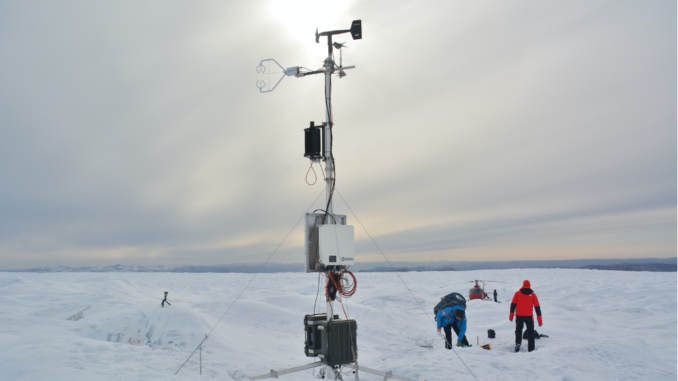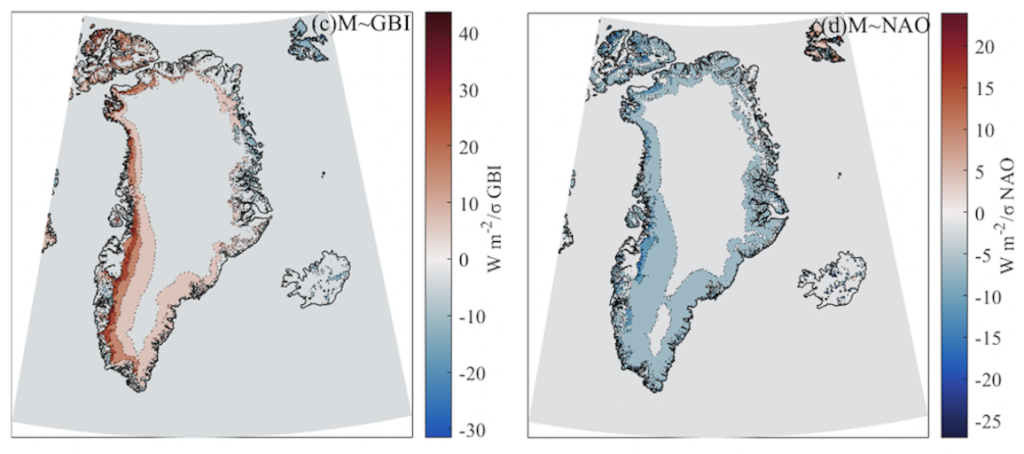
Image: researchers installing equipment on the Greenland ice sheet, September 2020 (Image: UU/IMAU)
PROTECT paper number 2 “Long-term surface energy balance of the western Greenland Ice Sheet and the role of large-scale circulation variability” written by Baojuan Huai, Michiel R. van den Broeke, and Carleen H. Reijmer, was published on 25 November 2020 in The Cryosphere.
Here are the keys findings:
- Mass loss from the Greenland ice sheet is a leading contributor to sea level rise. This study combines observations from Greenland weather stations with a climate model to assess the impact of large-scale atmospheric circulation variability on Greenland melt and mass loss.
- It finds a clear positive relation between melt and atmospheric blocking over Greenland (a wavy jet stream), in which the large-scale circulation transports warm air from low latitude regions to the western ice sheet. Clear skies further enhance the strong melting.

- These strong connections between atmospheric circulation and Greenland ice sheet melt must be well represented in climate models in order to accurately predict mass loss of the Greenland ice sheet and its future contribution to sea level rise.

